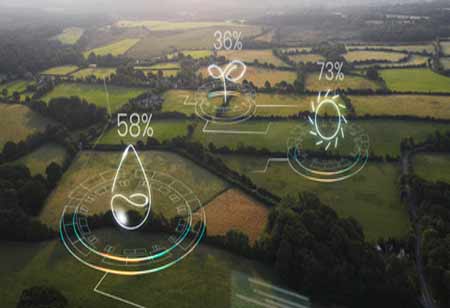Thank you for Subscribing to Agri Business Review Weekly Brief
AI-Powered In-Row Weeding in European Agriculture

By
Agri Business Review | Thursday, December 18, 2025
Stay ahead of the industry with exclusive feature stories on the top companies, expert insights and the latest news delivered straight to your inbox. Subscribe today.
While a cornerstone of the continent's economy and culture, European agriculture faces mounting pressure to adopt more sustainable practices. One of the most pressing challenges is the pervasive overuse of herbicides, which contributes to environmental pollution, biodiversity loss, and potential health risks. A promising solution is emerging from the intersection of artificial intelligence and robotics: AI-powered in-row weeding. This innovative technology offers a precise and eco-friendly alternative to blanket herbicide applications, paving the way for a healthier and more sustainable agricultural landscape across Europe.
How AI-Powered In-Row Weeding Works
An AI-powered in-row weeding system leverages high-resolution imaging, advanced image analysis algorithms, precise actuation mechanisms, and a mobile robotic platform to capture detailed field data. Using AI, the system accurately distinguishes between crop types and weed species, enabling the precise activation of mechanical weeding tools or targeted laser systems to eliminate identified weeds effectively.
AI-powered in-row weeding technologies are rapidly gaining momentum across Europe, driven by advancements in machine learning algorithms, integration with farm management systems, and the development of diverse robotic platforms. Enhanced algorithms now enable faster and more accurate weed detection, significantly improving processing speeds and allowing autonomous robots to cover larger areas more efficiently.
These next-generation weeding robots are increasingly integrated with farm management software, facilitating seamless data exchange and more informed decision-making. The market is also witnessing the emergence of robotic platforms tailored to various crop types and field conditions, ranging from compact, lightweight units designed for speciality crops to larger, more robust machines suited for broad-acre farming.
This technological evolution aligns with the European Commission’s Farm to Fork Strategy, which targets a 50 per cent reduction in chemical pesticide use by 2030. Commercial deployments and pilot initiatives are already underway in countries such as France, Germany, Denmark, and the Netherlands, marking a significant step toward more sustainable and precision-driven agriculture.
Benefits of AI-Powered In-Row Weeding for European Agriculture
AI-powered in-row weeding technologies are transforming European agriculture by delivering critical benefits. These systems significantly reduce the need for herbicides, improving soil health, enhancing biodiversity, and decreasing herbicide resistance. By enabling greater precision in weed control, they support higher crop yields and improved quality, contributing to labour cost savings and facilitating data-driven decision-making.
Furthermore, adopting these technologies aligns closely with the objectives of the European Green Deal, promoting more sustainable and resilient agroecosystems. Integrating AI-powered in-row weeding is beneficial and essential for advancing sustainable agricultural practices across Europe.
The path forward involves continued research and development to improve AI-powered weeding systems' affordability, robustness, and versatility. Government support through subsidies, research funding, and farmer education and training initiatives will drive widespread adoption across Europe. Collaboration between technology providers, agricultural researchers, and farmers is essential to tailor these solutions to European agriculture's specific needs and challenges.
AI-powered in-row weeding represents a significant leap towards a more sustainable and environmentally friendly future for European agriculture. This technology can potentially mitigate the detrimental impacts of conventional weed management practices by offering a precise and effective alternative to broad-spectrum herbicides. As the technology advances and becomes more accessible, it promises to play a vital role in cultivating a healthier environment, preserving biodiversity, and ensuring the long-term viability of European farming in line with the ambitious goals of the European Green Deal. The latest developments in accuracy, integration, and platform diversity signal a promising trajectory for the widespread adoption of this transformative technology across the continent.





